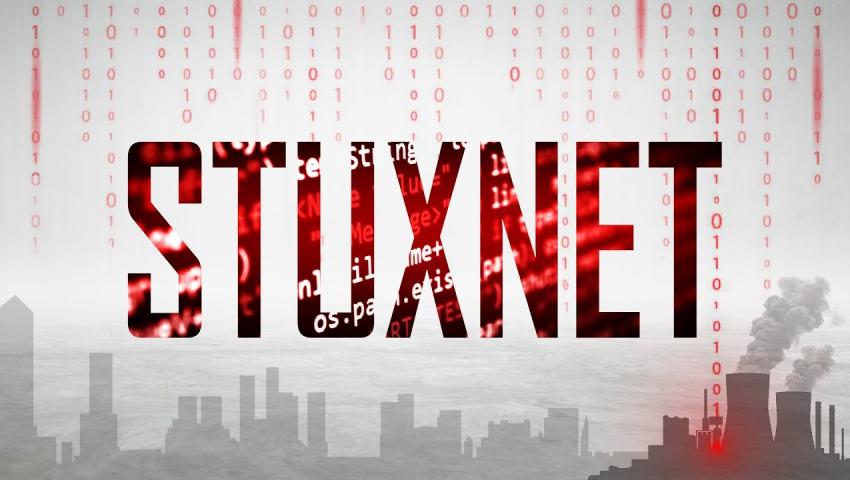
Stuxnet: The World's First Digital Weapon and Its Impact on Cyber Warfare
Stuxnet is often referred to as the world's first cyber weapon. It marked a turning point in the history of cybersecurity, demonstrating how malicious software could be used to cause physical damage to critical infrastructure.
Introduction
Unlike traditional cyberattacks aimed at data theft or espionage, Stuxnet was designed to sabotage an industrial process, making it a revolutionary tool in cyber warfare. This article explores the origins of Stuxnet, its technical capabilities, and key case studies, highlighting its impact on cybersecurity and international relations.
Origins of Stuxnet
Stuxnet was discovered in 2010 by cybersecurity researchers but is believed to have been developed several years earlier by a collaborative effort between U.S. and Israeli intelligence agencies, specifically the NSA (National Security Agency) and Unit 8200. The primary target was Iran's nuclear enrichment program at the Natanz facility, where centrifuges were being used to enrich uranium.
How Stuxnet Works
Stuxnet is a highly sophisticated worm designed to target industrial control systems (ICS), specifically Siemens' Supervisory Control and Data Acquisition (SCADA) systems, which are commonly used in nuclear facilities. The malware exploited multiple zero-day vulnerabilities—unknown software flaws that could be exploited without any existing patches—making it extremely potent.
Key Features and Capabilities
- Zero-Day Exploits: Stuxnet utilized at least four zero-day vulnerabilities in Microsoft Windows. At the time, this was unprecedented, as zero-day exploits are rare and valuable. The malware spread initially via infected USB drives, allowing it to penetrate air-gapped networks—those disconnected from the internet for security reasons.
- Targeted Industrial Sabotage: Stuxnet specifically targeted Programmable Logic Controllers (PLCs) manufactured by Siemens. These PLCs were used to control the speed of centrifuges at the Natanz facility. By manipulating the PLCs, Stuxnet caused the centrifuges to spin at extreme speeds, leading to physical damage while reporting normal operation to monitoring systems. This stealthy approach delayed detection and masked the source of the problem.
- Self-Replication and Stealth: Stuxnet was designed to spread widely across computer networks to locate its intended target. However, it only activated its sabotage payload when it detected the specific configuration of Siemens hardware used in the Natanz facility. Additionally, it included advanced stealth features, such as rootkit capabilities, making it difficult to detect and analyze.
Discovery and Initial Response
In June 2010, a Belarusian cybersecurity company named VirusBlokAda was the first to detect Stuxnet after a customer in Iran reported unusual computer behavior. The malware quickly drew the attention of cybersecurity experts worldwide. Analysis by Symantec and other cybersecurity firms revealed its complexity and its specific targeting of Siemens SCADA systems, raising concerns about its intended purpose.
Case Study: The Attack on Natanz
The most prominent and successful use of Stuxnet was against the Iranian nuclear facility at Natanz. Iran had been enriching uranium as part of its nuclear program, which was a point of contention with the United States and Israel, who suspected the program had military intentions.
Impact on Natanz Facility
Stuxnet infiltrated the Natanz facility's computer systems, likely through infected USB drives brought in by contractors. Once inside, it targeted Siemens PLCs controlling the gas centrifuges used for uranium enrichment. The malware manipulated the centrifuges' speed, causing them to spin at rates beyond their designed capacity, leading to mechanical stress and, ultimately, failure.
- Physical Damage: Reports suggest that Stuxnet caused the destruction of around 1,000 of the 5,000 centrifuges at Natanz. The attack delayed Iran's nuclear program significantly, setting back their enrichment capabilities by months or even years.
- Deceptive Tactics: The malware also sent false feedback to the control room, making it appear that the centrifuges were operating normally. This delayed the detection of the sabotage, as operators could not see the actual physical malfunction happening on the centrifuges.
Technical Analysis and Reverse Engineering
The analysis of Stuxnet by cybersecurity researchers unveiled its groundbreaking features, making it one of the most studied pieces of malware in history. Notably, researchers from Symantec and Kaspersky Lab played a significant role in dissecting its code.
Key Discoveries
- Digital Signatures: Stuxnet used stolen digital certificates from two reputable companies, Realtek and JMicron, to appear as legitimate software, bypassing security software and gaining access to systems. This was one of the first times malware was seen using authentic digital signatures to mask its presence.
- Modular Architecture: The malware was modular, meaning it was designed with different components that could be updated or modified independently. This modularity allowed Stuxnet to be flexible and adaptive, making it more difficult to counter.
- Complex Payload Delivery: Stuxnet’s payload was highly specific, designed to activate only when certain conditions were met. This included checking for the presence of Siemens Step7 software, used to control PLCs in industrial environments, ensuring that the malware would only execute its destructive payload in specific settings.
Impact on Cyber Warfare and Global Security
The discovery of Stuxnet had a profound impact on the field of cybersecurity and international relations. It was the first known instance of malware designed not just to spy or steal data, but to cause physical damage to industrial equipment.
1. A New Era of Cyber Warfare
Stuxnet demonstrated the potential for cyber weapons to cause real-world, physical destruction, setting a precedent for future cyber operations. It highlighted the vulnerability of critical infrastructure to digital attacks, reshaping military and strategic planning around the world.
- Inspiration for Other Attacks: The success of Stuxnet inspired the development of similar cyber weapons, leading to increased investment in offensive cyber capabilities by nations worldwide. Subsequent malware like Duqu and Flame, which are believed to have been developed by the same group, were used for espionage rather than sabotage but demonstrated similar sophistication.
2. The Blurring of Warfare Boundaries
Stuxnet's deployment raised ethical and legal questions about the use of cyber weapons. Traditionally, acts of war were defined by physical attacks, but Stuxnet blurred these boundaries by launching a covert digital operation with significant physical consequences. This has led to ongoing debates about the rules of engagement in cyber warfare and the need for international norms and agreements.
3. Increased Focus on Industrial Cybersecurity
The attack on Iran’s nuclear facility exposed the vulnerabilities of industrial control systems, prompting a global reassessment of the security of critical infrastructure. Governments and private companies began investing heavily in securing their SCADA systems and industrial networks against similar threats.
Case Study: Stuxnet's Legacy and Ripple Effects
Following the discovery of Stuxnet, Iran responded by strengthening its cybersecurity measures and launching its own cyber capabilities. The attack is believed to have played a role in Iran's decision to develop offensive cyber operations, leading to a series of retaliatory cyberattacks against U.S. and Israeli targets.
- Iranian Cyber Response: Iran's newfound focus on cyber capabilities led to attacks such as the Shamoon virus in 2012, which targeted Saudi Aramco, one of the world's largest oil companies. The malware wiped data from thousands of computers, causing significant disruption.
- Increased Global Tensions: The deployment of Stuxnet is widely seen as an escalation in cyber conflicts, pushing other nations to develop their own offensive cyber tools. The cyber arms race that followed has led to an increased focus on cybersecurity as a critical component of national defense.
Conclusion
Stuxnet was a watershed moment in the history of cyber warfare, demonstrating the power of digital weapons to cause physical damage to critical infrastructure. Its sophisticated design and targeted approach have influenced countless cyber operations since, shaping the strategies of nations looking to defend against or deploy similar capabilities.
The legacy of Stuxnet lies not only in its immediate impact on Iran's nuclear program but also in its lasting influence on global cybersecurity policy and military strategy. As nations continue to develop offensive cyber capabilities, the lessons learned from Stuxnet will remain relevant, underscoring the need for stronger defenses, clearer rules of engagement, and international cooperation to prevent the escalation of cyber conflicts.
Stuxnet's story serves as a stark reminder of the potential consequences of cyber warfare, highlighting the importance of vigilance and resilience in an increasingly interconnected world. The evolution of digital threats like Stuxnet challenges governments, industries, and cybersecurity professionals to continuously adapt and strengthen their defenses against a new era of cyber conflict.
Alex Ananenko
Leave a comment
Your email address will not be published. Required fields are marked *


